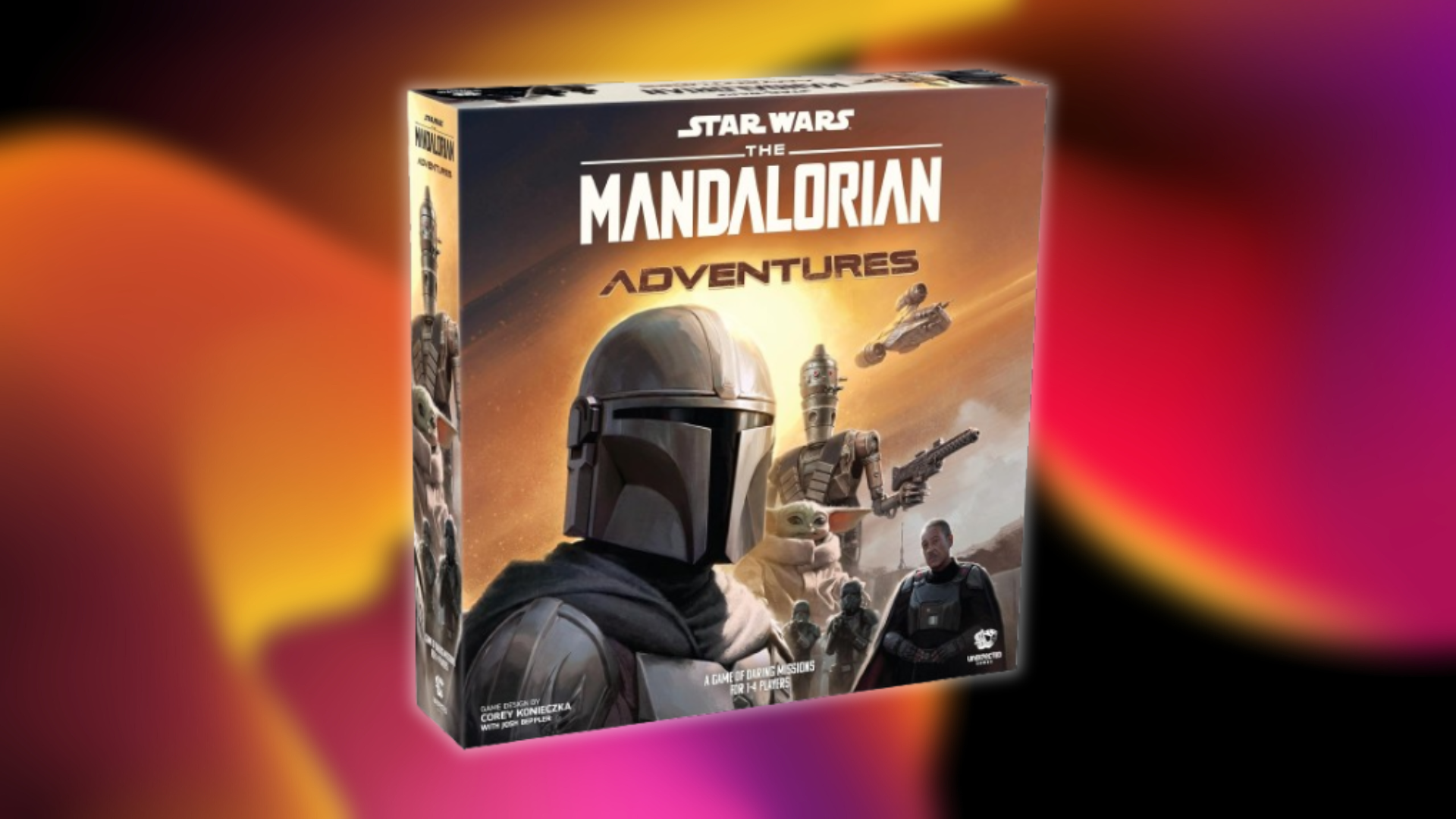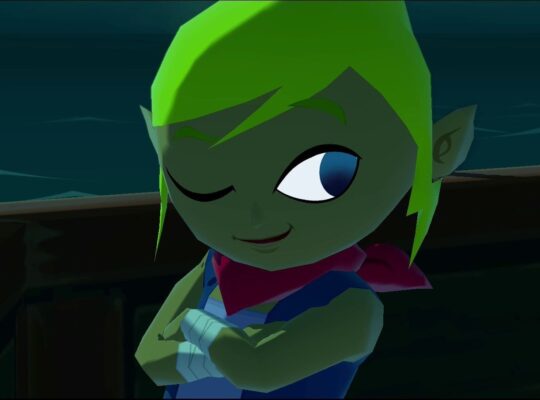When it comes to the best Star Wars board games, you have a lot of great choices. The Queen’s Gambit, for instance, recreates the multi-front finale of The Phantom Menace. Star Wars: Rebellion captures the breadth of the original trilogy in a three-hour epic. The Mandalorian Adventures is the latest tabletop take on Star Wars, and it’s shooting for a somewhat smaller scope. This new release is content to capture several key moments from the first season of The Mandalorian, presenting these encounters as 40-minute firefights with color, tension, and a minimal amount of overhead. Just like the show upon which it’s based, this is a splendid slice of Star Wars that packs some new surprises while managing to call back to the spirit of the franchise.
This is a very straightforward and approachable game. The Lord of the Rings Adventure Book Game immediately comes to mind, as the structure here is similar. Play is focused around a spiral-bound book that forms the board. Each new scenario moves on to a subsequent page, allowing for quick setup and minimal storage space. While there is a main rulebook, missions themselves introduce new rules and tweaks that are printed alongside the map. It’s a relatively seamless experience to work through the book and internalize the additional details.
The core system is simple and surprisingly interesting. Players cooperate to take down game-controlled foes and accomplish the scenario objective. You can choose between characters such as Mando, IG-11, and Greef Karga. Each possesses their own unique deck of cards and abilities. On your turn you perform two actions, but the effectiveness of each action is variable and depends on the card you play. So, if you play a four-strength card to move, then you will move four spaces. A two-strength card to attack means you inflict two damage, and so on. Some cards include special ability text that offers additional benefits. This system is interesting because it’s a blend of a straightforward two-action turn with variance in action points. Furthermore, the way enemy response plays off this card system is splendid.
These action cards are played in slots on the board. All of the cards any player spends to move go into the “move” slot, for instance. Once one of the slots receives a total of five or more strength total, the enemy phase triggers and a card is drawn. This emphasizes the strength of the game in presenting tense and nuanced systems with the absolute minimal amount of rules weight. It enforces timing constraints and facilitates discussion between players, because you may hold off on throwing down that powerful card so that one of your buddies gets to go before the enemies trigger.
This is a very straightforward and approachable game.
This tension is important, as it’s the primary source of drama. All damage is set by the power of your attack card or the activation card drawn for the enemies. No dice are rolled, so the dynamism is entirely encapsulated in the card play. This works to increase the speed of the game and achieve that brief playtime at the expense of a more nuanced combat system. That makes sense, as this game is aimed at less experienced players as well as dedicated hobbyists.
Despite the relative simplicity, Mandalorian Adventures has an almost puzzle-like feel. The difficulty, while able to be tweaked, is formidable enough that it requires thought and discussion on how players will approach their turns. Often, you will use what information you have in combination with gut instinct to formulate a plan. Analyzing the board state is essential to success.
One of the most intriguing aspects is in how it bridges the gap between those two levels of players. Each scenario is standalone, as this is not a campaign game. However, it wants you to engage the missions in order on your first playthrough. This is because there is an accompanying deck of cards that gives you step-by-step instructions on what to play next. It’s a key component in introducing new rules in bite-sized pieces, rules that you can then apply to all games going forward. New content is also added to play and the system adjustments are considerable. By your fifth session, the game will have grown quite a bit in density, but it will have been an effortless journey.
In addition to this large deck of cards, there are two full-sized envelopes. They contain additional ways to play or modify existing scenarios. Once you have finished revealing everything, you will have numerous ways to enjoy the game. It’s an interesting concept, one indicative of publisher Unexpected Games’ design philosophy. They presented a similar approach with their debut title, The Initiative (see at Amazon). That game also presented new content during the course of play and shook up expectations.
This methodology, of breaking up the experience into a gradual arc of play, and then throwing in several optional modules to re-experience existing scenarios, is very effective. One such example, mentioned in the game’s core rulebook and hence not technically a spoiler, is the inclusion of a traitor mode of play. This is a set of cards where players are given a randomized loyalty with the chance of one character being a traitor to the group. This is excellent as it touches upon the themes of trust and honor present in the television series. You can add these cards into any existing scenario to spice it up. This mode is completely optional and not the standard way to play. In fact, it’s probably best to hold off on this until you’ve played several sessions, as the traitor mode is somewhat fragile and can result in uneven plays. Yet, when it comes together with a perfectly timed reveal, it’s wonderfully cinematic.
There’s a good deal of depth here in exploring the system and additional content. It manages to elevate the experience, achieving a status above the comparably mellow Lord of the Rings Adventure Book Game. The Mandalorian Adventures is not likely to supplant Star Wars: Rebellion or Imperial Assault for fans of those more robust and weighty titles, but it’s a surprisingly devious game that captures a solid amount of tension with simple and interesting systems. It is very flexible, supporting solitaire play or even multiple participants sharing characters by shuffling all of the cards into a single deck. This really is a stellar box that offers much more than appears on the surface.












